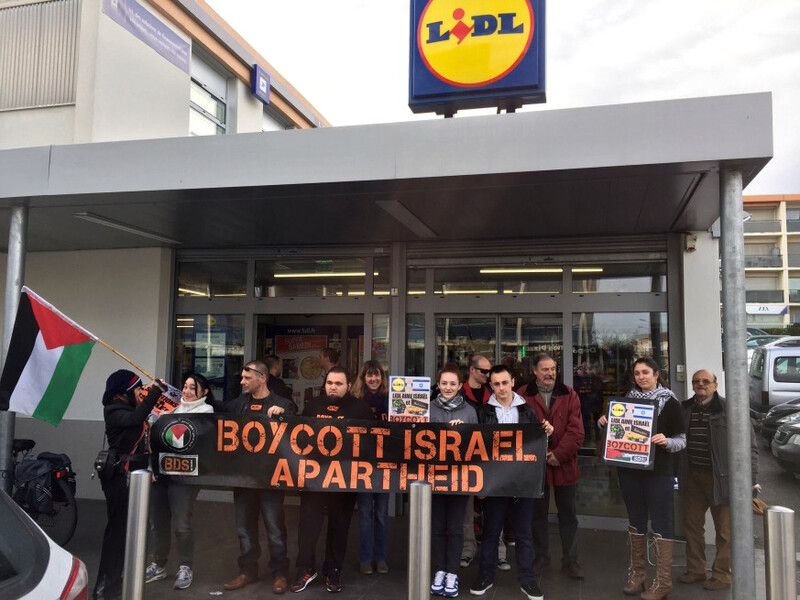The strategy of the
anti-Jewish boycott in modern times can be traced to the anti-Semitism of the
Nazi Germany and in the Middle East to the postwar Arab anti-Zionist activity.
In the same year that Hitler rose to power in Germany, the Arab Higher
Committee (لجنة العربية العليا),
headed by the future Nazi collaborationist Haj Amin al-Husseini, Mufti of
Jerusalem, called for a boycott against the Jews in the British Mandate of Palestine.
A couple of years before the 1948 establishment of the State of Israel, the
Arab League organized an official boycott against the Jews of Palestine in
December 1945.

Three Jewish businessmen are forced to march down a crowded Leipzig street while carrying signs reading: "Don't buy from Jews. Shop in German businesses!" Leipzig, Germany, 1935.
— US Holocaust Memorial Museum
In 1994, partially
because of the Oslo accords, partially because the inefficiency of the Arab
boycott, GCC states (Cooperation Council for the Arab States of the Gulf), officially
ceased their participation in the boycott. They also states that the boycott
hindered the regional economic development.
Since then the
boycott was not much applied, but in the mid-2005 the Palestinians initiated a
global movement pressuring for boycott, divestment and sanctions, in different
fields like trade, academics, cultural activities, etc. The main aim of this
movement is the destruction of the State of Israel as was admitted by one of
its founders, Omar Barghouti, who said “ending the Israeli control of the
territories is only the first stage in the way to implement the vision of dismantling
Israel”. Barghouti was born in Qatar, grew up in Egypt and later moved to Israel
as an adult. He opposes the two-state solution. He has been widely criticized for
on one side lobbying for a global economic, cultural and academic boycott of
Israel, and on the other, having studied in the Tel Aviv University.
In the end of the
day, the BDS movement is basically an anti-Semitic force, and, in the same
fashion that the Nazis attacked in the last century the Jewish main
demographical centre, today they attack the current largest Jewish community of
the world and the main resource of the Jewish people, the State of Israel.

In a direct challenge to legal rulings, BDS activists staged a protest calling for the boycott of Israeli goods at a LIDL supermarket in the south of France on 23 January 2016.
The BDS is a malign force, but also very inefficient. They can disrupt the selling of Israeli oranges in a Parisian supermarket, but it doesn’t work the same way with the complex Israel export of knowhow and high-tech products. Israel is economically strong and it is strengthening even more. In the last days, the Indian government has cleared a $2.5 billion deal purchasing from Israel for its army a medium-range surface-to-air missile defense system. The partners of the Leviathan gas reservoir, some 130 km west of Haifa, have announced that they will invest $3.75 billion. Crushing the BDS efforts, this is Israel’s biggest energy project and financial investment in all its history.
